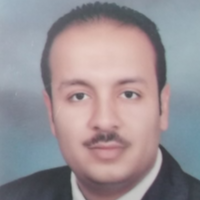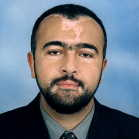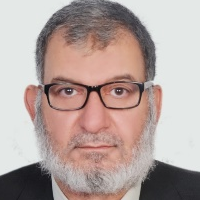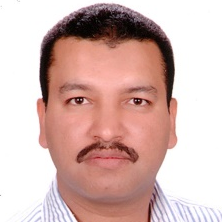International Journal of Intelligent Systems and Applications (IJISA)
IJISA Vol. 7, No. 3, 8 Feb. 2015
Cover page and Table of Contents: PDF (size: 892KB)
Modified Particle Swarm Optimization Based Proportional-Derivative Power System Stabilizer
Full Text (PDF, 892KB), PP.62-76
Views: 0 Downloads: 0
Author(s)
Index Terms
PSS, PSO, single machine infinite bus, and damping LFO
Abstract
During a change in operating condition, oscillations of small magnitude and low frequency often persist for long periods of time and in some cases even present limitations on power transfer capability. Generators in power systems are equipped with automatic voltage regulator (AVR) to control terminal voltage. It is known that AVR has a detrimental impact upon the dynamic stability of the power system. Power system stabilizers (PSS) are widely used to generate supplementary control signals for the excitation system in order to damp out low-frequency oscillations (LFOs). In this paper proportional-derivative power system stabilizer (PD-PSS) used to damping LFO after tuning the gains of the PSS by using PSO. The damping boundary condition of PSO technique is modified to improve its performance in the tuning and optimization process. Simulation studies performed on a typical single-machine infinite-bus (SMIB) system used in MATLAB Simulink program. Assessing the performance of the proposed modified PSO based PD-PSS with Speed deviation (∆ω) as an input signal using eigenvalue analysis. The proposed PSO based PD-PSS is evaluated and examined under different operating conditions and inertia constant each one of them applied with two test cases small disturbance and short circuit. A comparative study between the proposed PSO based PD-PSS, original PSO based PD-PSS, and lead-lag PSS is done in this work. The results ensure the superiority, the effectiveness, and the robustness of the proposed PSS over the other techniques.
Cite This Paper
Nader M.A. Ibrahim, Hossam E. M. Attia, Hossam E.A. Talaat, Ali H. Kasem Alaboudy, "Modified Particle Swarm Optimization Based Proportional-Derivative Power System Stabilizer", International Journal of Intelligent Systems and Applications(IJISA), vol.7, no.3, pp.62-76, 2015. DOI:10.5815/ijisa.2015.03.08
Reference
[1]D. Sumina, N. Bulic, and M. Miscovic, “Parameter tuning of power system stabilizer using eigenvalue sensitivity,” Electric Power Systems Research, vol. 81, no. 12, pp. 2171-2177, Dec. 2011.
[2]H. Bevrani, T. Hiyama, and H. Bevrani, “Robust PID based power system stabilizer: Design and real-time implementation,” International Journal of Electrical Power and Energy Systems (IJEPES), vol. 33, no. 2, pp. 179-188, Feb. 2011.
[3]Y. Yu, Electric Power System Dynamics, Book, United Kingdom Edition published by ACADEMIC PRESS, INC. (LONDO) LTD. 1983.
[4]H. Mostafa, M. Elsharkawy, A. Emary, and K. Yassin, “Design and Allocation of Power System Stabilizers Using the Particle Swarm Optimization Technique for an Interconnected Power System,” International Journal of Electrical Power and Energy Systems (IJEPES) Elsevier publisher, vol. 34, no. 1, pp. 57-65, Jan. 2012.
[5]Z. Jiang, “Design of a nonlinear power system stabilizer using synergetic control theory,” Electric Power Systems Research, vol. 79, no. 6, pp. 855-862, Jun. 2009.
[6]F. Saleh, and M. Mahmoud, “Design of power system stabilizers using reduced-order models,” Electric Power Systems Research, vol. 33, no 3, pp. 219-226, Jun. 1995.
[7]R. Gupta, B. Badyopadhyay, and A. Kulkarni, “Design of power system stabilizer for single machine system using robust fast output sampling feedback technique,” Electric Power Systems Research, vol. 65, no. 3, pp. 247-257, Jun. 2003.
[8]Y. Peng, Q. Min, and H. Nouri, “Robust H2 power system stabilizer design using LMI technique,” Proceeding of 2011international conference on Modelling, Identification and Control (ICMIC), vol. 5, pp. 405-410, Jun. 2011.
[9]D. Sambariya, and R. Prasad, “Design of PSS for SMIB system using robust fast output sampling feedback technique,” International conference on Intelligent Systems and Control (ISCO), vol. 7, pp. 166-171, Jan. 2013.
[10]D. Chaturvedi, and O. Malik, “Generalized neuron-based PSS and adaptive PSS,” Control Engineering Practice, vol. 13, no. 12, pp. 1507-1514, Dec. 2005.
[11]G. Chen, O. Malik, Y. Qin, and G. Xu, “Optimization technique for the design of a linear optimal power system stabilizer,” IEEE Transactions on Energy Conversion, vol. 7, no. 3, pp. 453-459, Sep. 1992.
[12]A. Soos, and O. Malik, “An optimal adaptive power system stabilizer,” Power Engineering Society Summer Meeting, vol. 2, pp. 1219-1224, Jul. 1999.
[13]A. Soos, and O. Malik, “An H2 Optimal Adaptive Power System Stabilizer,” IEEE Transaction Power Engineering Review, vol. 22, no. 2, pp. 59, Feb. 2002.
[14]J. Talaq, “Optimal power system stabilizers for multi machine systems,” International Journal of Electric Power and Energy Systems, vol. 43, no. 1, pp. 793-803, Dec. 2012.
[15]Y. Park, J. Lee, S. Hyun, and K. Lee, “Asynchronous generator stabilizer based on a universal model,” Electrical Power and Energy Systems, vol. 20, no. 6, pp. 435-442, 1998.
[16]F. HE, and M. GIBBARD, “Design of an Adaptive Bilinear Power System Stabilizer,” Automatica, vol. 33, no. 4, pp. 663-668, April 1997.
[17]P. Dash, A. Liew, and B. Mishra, “An adaptive PID stabilizer for power systems using fuzzy logic,” Electric Power Systems Research, vol. 44, no. 3, pp. 213-222, Mar. 1998.
[18]T. Liao, “Design of an adaptive nonlinear controller to improve stabilization of a power system,” International Journal of Electrical Power and Energy Systems, vol. 21, no. 6, pp. 433-441, Aug. 1999.
[19]T. Abdelazim, and O. Malik, “An adaptive power system stabilizer using on-line self-learning fuzzy systems,” IEEE transaction, Power Engineering Society General Meeting, vol. 3, pp. 1715-1720, Jul. 2003.
[20]E. Nechadi, M. Harmas, A. Hamzaoui, and N. Essounbouli, “A new robust adaptive fuzzy sliding mode power system stabilizer,” International Journal of Electric Power and Energy Systems, vol. 42, no. 1,pp. 1-7, Nov. 2012.
[21]S. Radaideh, I. Nejdawi, and M. Mushtaha, “Design of power stabilizers using two level fuzzy and adaptive neuro-fuzzy inference systems,” International Journal of Electric Power and Energy Systems, vol. 35, no. 1, pp. 47-56, Feb. 2012.
[22]G. Rigatos, and P. Siano, “Design of robust electric power system stabilizers using Khaitonov's theorem,” Mathematics and Computers in Simulation, vol. 82, no. 1, pp. 181-191, Sep. 2011.
[23]A. Sharaf, and T. Lie, “A hybrid neuro-fuzzy power system stabilizer,” Proceedings of the Third IEEE Conference on Fuzzy Systems IEEE World Congress On Computational Intelligent, vol. 3, pp. 1608-1613, Jun. 1994.
[24]A. Afzalian, and D. Linkens, “Training of neurofuzzy power system stabilizers using genetic algorithms,” Electrical Power and Energy Systems, vol. 22, pp. 93-102, 2000.
[25]M. Salem, O. Malik, A. Mahgoub, and E. El-zahab, “Simple neuro-controller with a modified error function for a synchronous generator,” International Journal of Electric Power and Energy Systems, vol. 25, no. 9, pp. 759-771, Nov. 2003.
[26]A. Sharma, and M. Kothari, “Intelligent dual power system stabilizer,” Electric Power Systems Research, vol. 64, no. 3, pp. 257-267, Mar. 2003.
[27]V. Ravi, and K. Duraiswamy, “Effective optimization technique for power system stabilization using Artificial Bee Colony,” International Conference on Computer Communication and Informatics (ICCCI), pp. 1-6, Jan. 2012.
[28]H. Alkhatib, and J. Duveau, “Dynamic genetic algorithms for robust design of multi-machine power system stabilizers,” International Journal of Electric Power and Energy Systems, vol. 45, no. 1, pp. 242-251, Feb. 2013.
[29]W. Mamlouk, H. Mostafa, and M.A. Elsharkawy, “PSO-Based PI Controller for Shunt APF in Distribution Network of Multi Harmonic Sources,” International Journal of Intelligent Systems and Applications IJISA, Vol. 5, No. 8, pp. 54-66, July 2013.
[30]Hardiansyah, Junaidi,Yohannes MS, “Solving Economic Load Dispatch Problem Using Particle Swarm Optimization Technique,” International Journal of Intelligent Systems and Applications IJISA, vol. 4, no. 12, Nov. 2012.
[31]M. Heydari,S.M. Hosseini,S.A. Gholamian, ” Optimal Placement and Sizing of Capacitor and Distributed Generation with Harmonic and Resonance Considerations Using Discrete Particle Swarm Optimization,” International Journal of Intelligent Systems and Applications IJISA, vol. 5, no. 7, Jun. 2013.
[32]Y. Abdel-Magid, and M. Dawoud, “Tuning of power system stabilizers using genetic algorithms,” Electric Power Systems Research, vol. 39, no. 2, pp. 137-143, Nov. 1996.
[33]J. Lu, M. Nehrir, and D. Pierre, “A fuzzy logic-based self-tuning power system stabilizer optimized with a genetic algorithm,” Electric Power Systems Research, vol. 60, no. 2, pp. 77-83, Dec. 2001.
[34]S. Ghoshal, A. Chatterjee, and V. Mukherjee, “Bio-inspired fuzzy logic based tuning of power system stabilizer,” Expert Systems with Applications, vol. 36, no. 5, pp. 9281-9292, Jul. 2009.
[35]H. Alkhatib, and J. Duveau, “Dynamic genetic algorithms for robust design of multi-machine power system stabilizers,” International Journal of Electric Power and Energy Systems, vol. 45, no. 1, pp. 242-251, Feb. 2013.
[36]P. Kundur, “Power System Stability and Control,” McGraw-Hill, 1994.
[37]Q. Bai, “Analysis of Particle Swarm Optimization Algorithm,” Computer and Information Science, vol. 3, no. 1, Feb. 2010.
[38]B. Birge, “Particle Swarm Optimization Toolbox,” available at Matlab Online Help, http://www.MathWorks.com.
[39]D. Jovcic, and G. Pillai, “Analytical modeling of TCSC dynamics,” IEEE Transactions on Power Delivery, vol. 20, no. 2, Apr. 2005.
[40]T. Huang, and A.S. Mohan, “A Hybrid Boundary Condition for Robust Particle Swarm Optimization,” IEEE Antennas and Wirless Propagation Letters, Vol.4, pp. 112-117, 2005.
[41]J. Robinson, and Y. Rahmat-Samii, “Particle Swarm Optimization in Electromagnetics,” IEEE Trans. Antennas and Propagation, Vol.52, No. 2, pp. 397-407, Feb. 2004.



